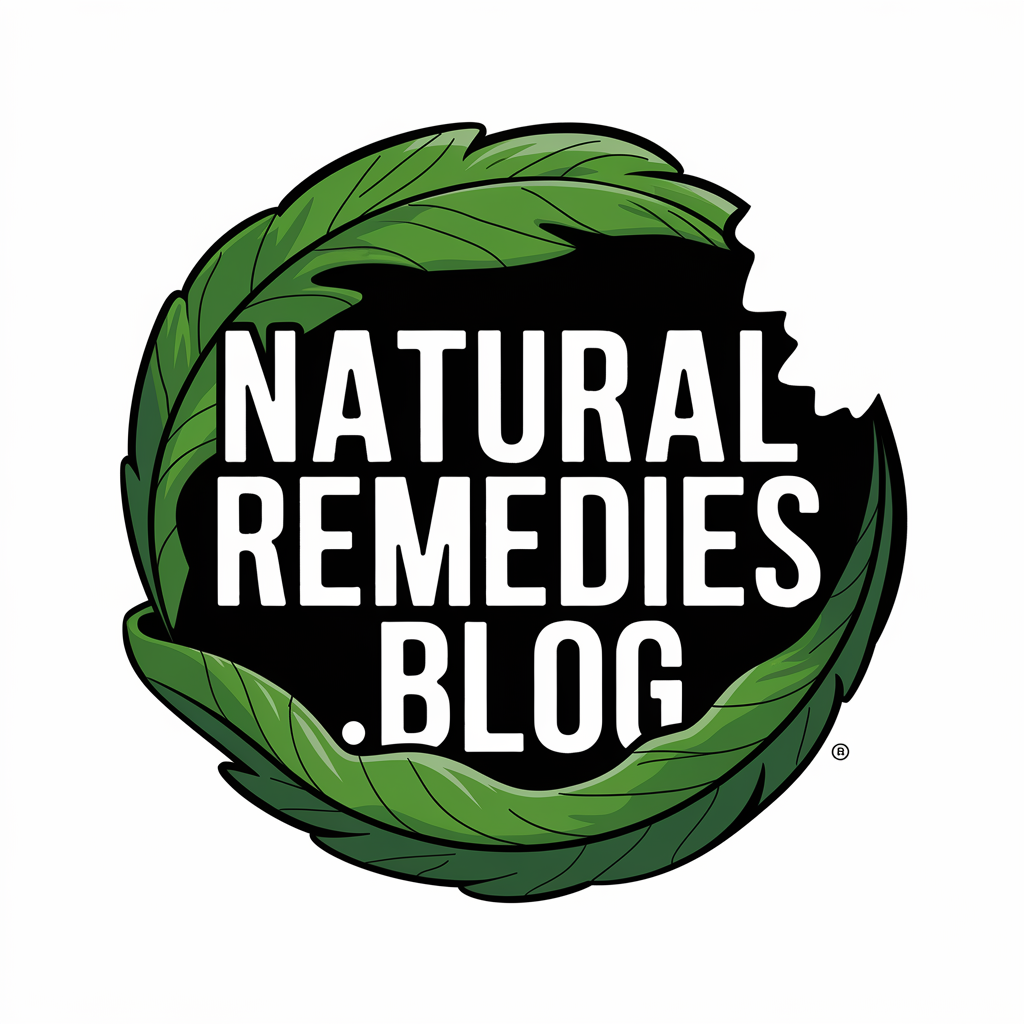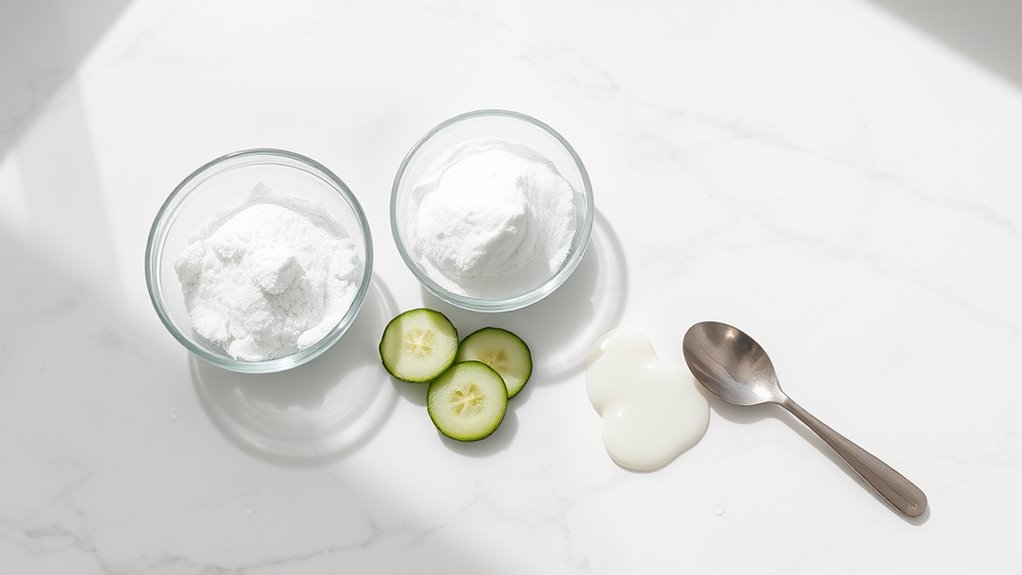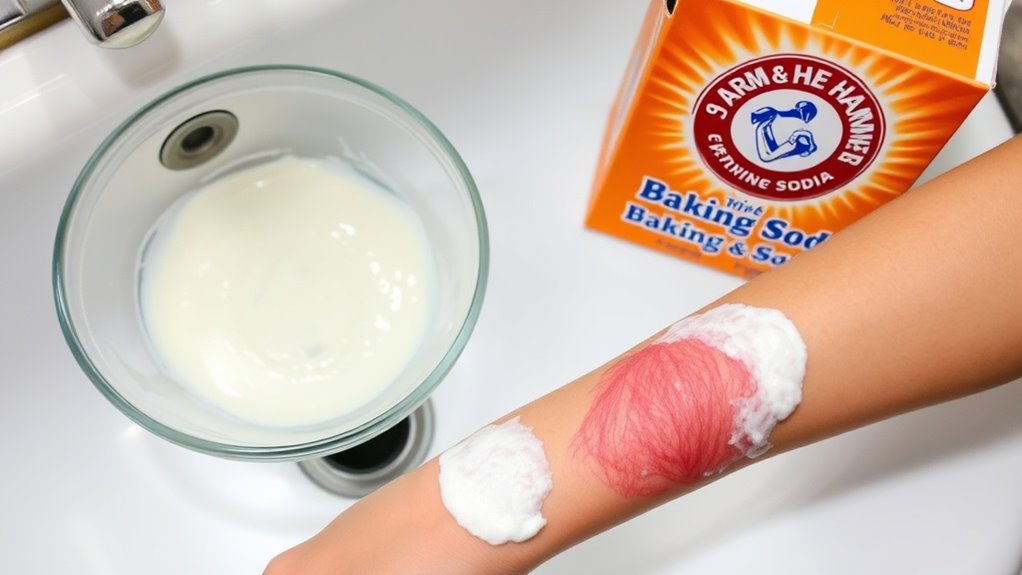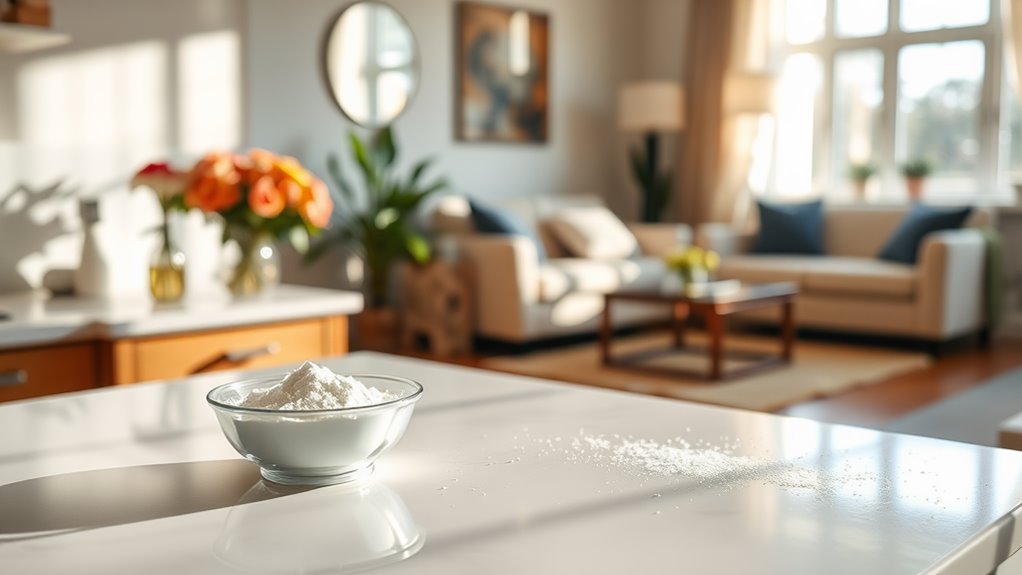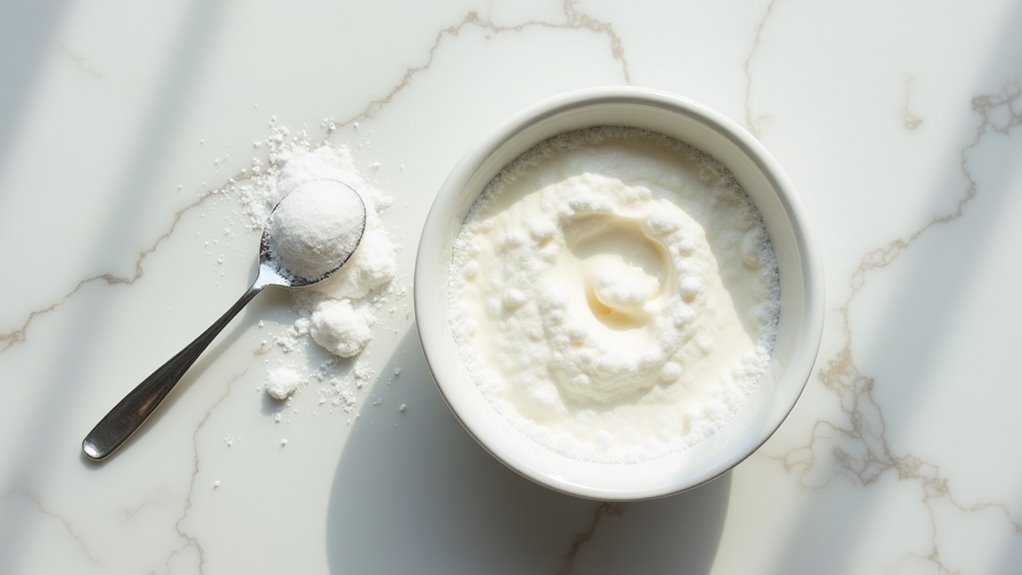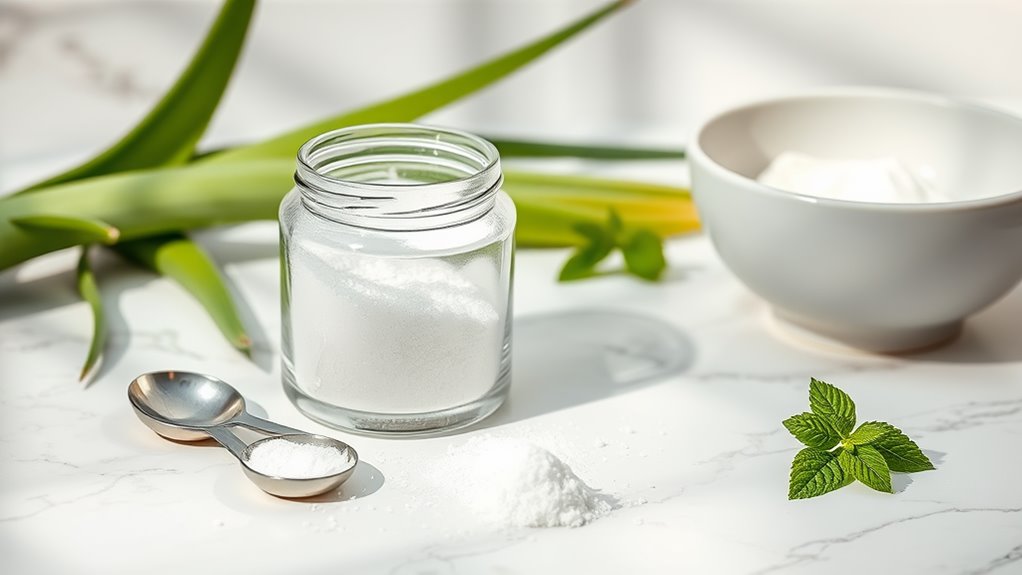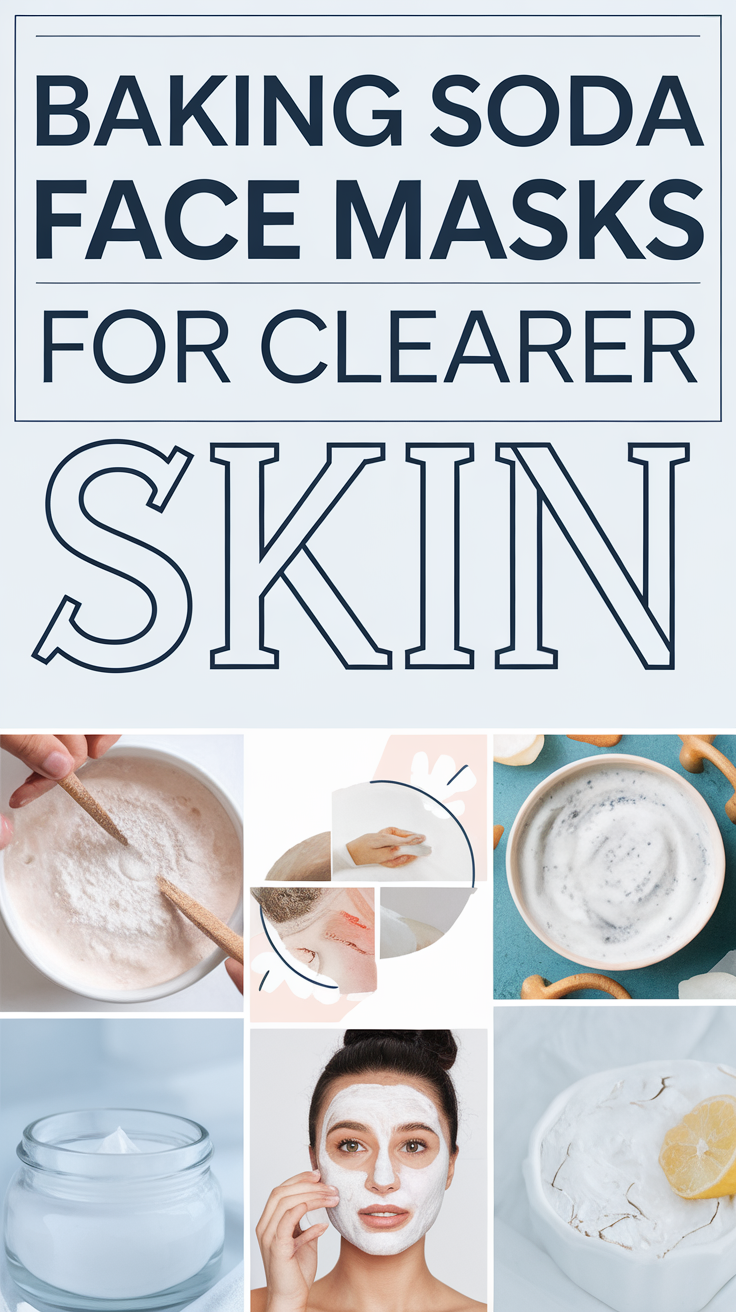Baking Soda Hacks That Will Change Your Skincare Routine Forever
You can transform your skincare routine with baking soda’s scientifically-proven properties, but proper usage is essential. When mixed correctly, this alkaline ingredient helps combat acne, exfoliates dead skin cells, and balances pH levels. Create targeted masks by combining it with ingredients like honey or coconut oil for your specific skin type. However, you’ll need to follow specific safety guidelines and concentration ratios to avoid potential irritation. Understanding the complete approach will help you maximize its benefits.
The Science Behind Baking Soda’s Skin-Transforming Powers
What makes baking soda such a powerful skincare ingredient?
The science points to its unique pH-balancing properties and natural antimicrobial qualities.
When you apply a baking soda face mask, its alkaline nature helps neutralize skin acidity, potentially restoring balance to your skin’s pH levels of 4.5 to 5.5.
Research suggests baking soda’s fine particles act as a gentle exfoliant, removing dead skin cells while combating bacteria that cause breakouts. In skin treatments, 10 grams per liter of sodium bicarbonate solution has been shown to effectively inhibit fungal growth.
While its mechanism in dermatology isn’t fully understood, studies indicate it can calm inflammation and provide relief for conditions like eczema and psoriasis when used moderately.
DIY Baking Soda Masks for Different Skin Types
Creating effective baking soda masks requires careful consideration of your skin type and specific skincare needs.
For normal skin, combine one tablespoon of baking soda with water for basic exfoliation.
If you have sensitive skin, mix baking soda with oatmeal to create a gentler formula, as baking soda can cause irritation for some individuals.
Dry skin benefits from a blend of baking soda, coconut oil, and honey, while oily skin responds well to a mixture of baking soda and lemon juice.
Apply your chosen mask for 5-10 minutes, once or twice weekly.
Always perform a patch test first and discontinue use if irritation occurs.
However, dermatologists warn that prolonged use can disrupt your skin’s natural pH balance and promote bacterial growth.
Unlocking Clear Skin: Baking Soda Solutions for Acne
While baking soda offers potential benefits for acne-prone skin, its use requires careful consideration of both advantages and risks. Research suggests it may help combat acne-causing bacteria and reduce inflammation when applied as a spot treatment. However, you’ll need to exercise caution due to its alkaline nature, as it can disrupt skin’s natural pH balance. If you decide to try it, create a gentle paste with water and apply it only to specific acne spots for up to 15 minutes. Don’t use it more than twice weekly, and always follow with moisturizer. For safety, perform a patch test first and avoid extensive facial application, as it can disrupt your skin’s natural pH balance. Many dermatologists recommend using proven medical treatments instead of baking soda for treating acne.
Beyond the Face: Full-Body Baking Soda Beauty Treatments
Have you ever considered extending your skincare routine beyond just facial treatments?
Baking soda’s versatile properties make it an effective full-body beauty solution. Neutralizes acids effectively, it helps maintain skin’s natural balance and promotes smoother skin in bath soaks, where it removes excess oils.
Create a gentle exfoliant by mixing baking soda with water and oatmeal. This combination works effectively for whole-body exfoliation, improving skin texture at a fraction of commercial products’ cost.
For nail care, soak your hands in a baking soda solution to soften cuticles and maintain healthy nails. It’s also beneficial for hair care, acting as a natural clarifying agent to remove product buildup.
Mix one tablespoon of baking soda with your regular shampoo to enhance its cleaning power and address limp or lifeless hair.
Essential Safety Guidelines and Best Practices
The safe use of baking soda in skincare requires understanding its potent alkaline properties and potential risks. Its pH of 9 can disrupt your skin’s natural balance of 4.5-5.5, potentially causing dryness and irritation. Additionally, long-term use may lead to increased sensitivity and irritation, making it crucial to monitor your skin’s reaction. Before applying baking soda to your skin, perform a patch test to check for sensitivity. Limit exfoliation to once or twice weekly, using a diluted solution of about 5% concentration. You’ll need to be especially cautious if you have acne, eczema, or psoriasis. Don’t use baking soda if you’re pregnant, have heart disease, diabetes, or open wounds. Consider gentler alternatives if you experience any adverse reactions. With a mixture of three parts water, create a paste that’s safe for skin application.
References
- https://www.healthline.com/health/beauty-skin-care/baking-soda-for-skin
- https://www.jintegrativederm.org/api/v1/articles/122501-baking-soda-and-the-skin-a-review-of-baking-soda-in-dermatology.pdf
- https://www.healthline.com/health/baking-soda-acne
- https://www.webmd.com/beauty/ss/slideshow-beauty-baking-soda-health
- https://www.rinkykapoor.com/5-benefits-of-using-baking-soda.html
- https://www.jintegrativederm.org/article/122501-baking-soda-and-the-skin-a-review-of-baking-soda-in-dermatology
- https://www.armandhammer.com/en/articles/beauty-uses-for-baking-soda
- https://cymbiotika.com/blogs/health-hub/how-to-use-baking-soda-for-glowing-skin-a-comprehensive-guide
- https://www.businessinsider.com/baking-soda-skin-pros-cons-2023-9
- https://www.treehugger.com/ways-use-baking-soda-your-beauty-routine-4858376
